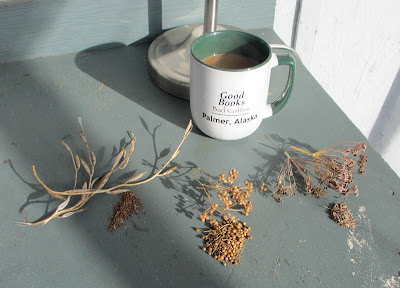Meanwhile, the Mat-Su Borough is spending wads of money on this:
Bills for the Mat-Su Borough’s M/V Susitna are beginning to come due.If there was some rational use for the ferry sometime in the future, I might feel a bit better about where this money is going, but I don't think they've found a way to implement anything worthwhile:
Although the borough doesn’t officially assume financial responsibility of the vessel until April 1, assembly members voted 6-1 this month to approve $93,941.26 to cover costs to guard, maintain and provide a two-member crew for the vessel.
That will get the assembly to May 31.
The Susitna is a prototype of a fast-moving shore-landing craft for the U.S. Navy. Though designed with tanks in mind, the borough took it on with plans to start a ferry system shuttling cars and drivers between Point MacKenzie and Anchorage. But so far, neither Cook Inlet shore has a ferry dock and the borough lacks funding to build one, let alone two.I'd rather that money be spent in our local schools, teaching young kids in integrated programs like the STEM program we've started (my wife volunteers there) at Machetanz Elementary. Here's how they describe the program at the school:
Science topics will stimulate curiosity and questioning. Icicles, rocks, airplanes, larvae…. provide motivation to read and collect data. Working with your hands is a plus. Hope you like to get dirty.In Juneau, at Glacier Valley Elementary, they have combined STEM with the arts, to create a "STEAM" program. Earlier in the month, when in Juneau to address he legislature, Sen. Mark Begich visited the program:
Technology is used as a tool to gain knowledge, organize systems, and to problem solve for purpose. Who knows, we may even take a trip to Japan, or visit Italy via our computers.
Engineering is all about creating, building, and making things better! So what does it take to be an engineer? If you like math and science, you are off to a great start. If you enjoy discovering new things, solving problems, and learning how things work – even better!
Math can be interesting. Can you imagine measuring the thickness of a bear skull, or the height of a mountain before you climb it? Just because it's math doesn't mean it can't be fun.
Begich has been working on efforts to include the arts into the STEM (Science, Technology, Engineering and Mathematics) initiative, making it STEAM.With kids educated to solve Alaska's problems through Science, Technological innovation, Engineering, Math acuity, and - YES! - the arts, Alaskans might find better solutions than pouring money out of state to prop up a useless ferry boat blocked up in a drydock.
“I’ve actually believed this before I saw what was going on there (Glacier Valley), adding arts is an important part,” he said.
Begich said his son has been playing the piano and didn’t really care for it until he saw the mathematical connection. Now, the thing he wants to do the most when he comes home is play the piano. He’s even memorized a song that starts as a classical piece and transitions into a song by Lady Gaga.
Begich said Alaska needs to step up to the plate with STEAM. He also spoke about improving education and what he’s working on at the federal level to achieve that.




































